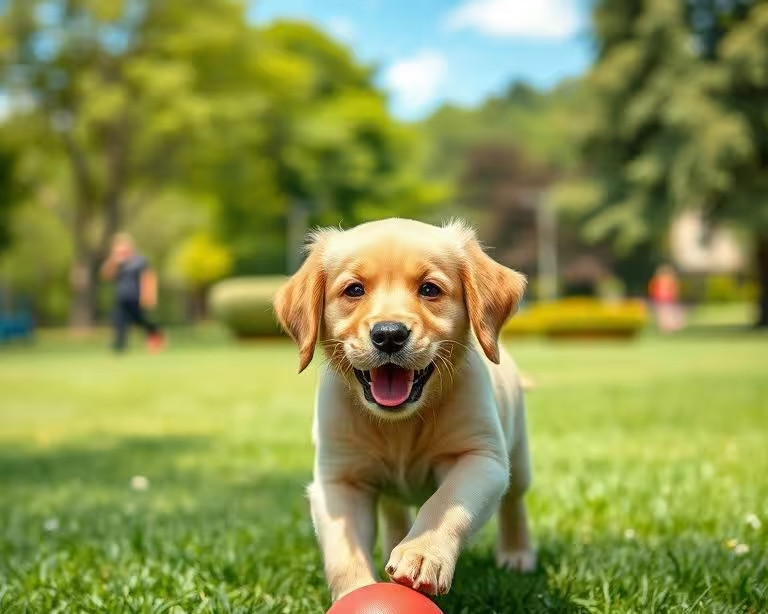Unsnapping Danger: The Definitive Guide to Pressure Activated Breakaway Dog Collars for Ultimate Canine Safety

As responsible dog owners, we constantly seek ways to ensure our beloved companions are safe, healthy, and happy. While traditional collars serve essential purposes like identification and leash attachment, they can pose unforeseen risks, especially for active dogs, multi-pet households, or when dogs are unsupervised. This is where the innovative pressure activated breakaway dog collar steps in, offering a vital layer of protection that could potentially save your dog's life.
Imagine your dog playing exuberantly with another canine, their collars accidentally intertwining. Or perhaps your adventurous pup snags their collar on a branch during a backyard exploration, or even on a crate wire. In these common scenarios, a traditional collar can become a choking hazard, leading to panic, injury, or worse. Pressure activated breakaway collars are specifically engineered to prevent such tragic accidents by releasing under tension, providing an instant escape mechanism. This comprehensive guide will delve into the mechanics, benefits, selection criteria, and top brands of these essential safety devices, empowering you to make an informed decision for your furry friend's well-being.

What Exactly is a Pressure Activated Breakaway Dog Collar?
A pressure activated breakaway dog collar is a specialized type of collar designed with a built-in safety mechanism that allows it to unbuckle or snap open when a certain amount of force is applied. Unlike standard buckles or clasps that require manual release, the breakaway feature responds automatically to pressure, preventing strangulation or injury if the collar gets caught on an object or another animal. This ingenious design is a critical safety upgrade for many canine companions.
Understanding the Breakaway Mechanism: How They Work
At its core, the mechanism of a pressure activated breakaway collar relies on a specifically engineered buckle. This buckle typically consists of two parts that are held together by a spring-loaded or friction-based system. When a predetermined amount of pressure or tension is exerted on the collar (e.g., if it gets pulled taut by a snag), the buckle's internal components disengage, causing the collar to pop open. This release is instantaneous, freeing the dog from potential danger.
The key differentiator is the 'pressure activated' aspect, meaning the release is involuntary and happens only when sufficient external force is applied, rather than relying on a dog to somehow activate it or a person to be present to intervene. The force required to activate the breakaway varies by brand and collar size, typically ranging from a few pounds for small dogs to 15-20 pounds for larger, stronger breeds. This calibration is crucial to ensure the collar doesn't break away too easily during normal activity but reliably releases in an emergency.
Distinguishing Breakaway Collars from Traditional Designs
Traditional dog collars, whether they use a standard plastic quick-release buckle, a metal buckle, or a martingale design, are built to stay fastened under tension. Their primary purpose is to allow for leash attachment and to securely hold identification tags. While effective for these functions, they lack an inherent safety release. If a traditional collar gets caught on something, it will remain fastened, tightening around the dog's neck as the dog struggles, leading to potential severe injury or suffocation. Breakaway collars address this specific vulnerability by prioritizing safety through their automatic release function, making them an indispensable piece of equipment, particularly when a dog is unsupervised.
The Indisputable Safety Benefits of Breakaway Dog Collars
The advantages of equipping your dog with a pressure activated breakaway collar are profound, extending beyond simple convenience to potentially life-saving protection. These benefits are particularly salient for dogs in various environments and situations.
Preventing Entanglement and Strangulation Hazards
One of the most critical functions of a breakaway collar is its ability to prevent entanglement. Dogs, especially those with an adventurous spirit or those living in multi-dog households, can easily find themselves in situations where their collar becomes a hazard. Common scenarios include:
- Getting caught on objects: Fences, tree branches, bushes, furniture, heating vents, or even household appliances can snag a collar. A struggling dog can quickly tighten a traditional collar, leading to strangulation.
- Interactions with other dogs: During boisterous play, a dog's jaw or paw can get caught in another dog's collar. This can lead to panic, injury, and even aggression as dogs become entangled and feel threatened.
- Crates and kennels: Wires or components within a dog crate or kennel can snag a collar. Although crates are designed for safety, an entangled collar can turn a safe space into a dangerous one if the dog is left unsupervised for extended periods.
In all these situations, the immediate release offered by a breakaway collar ensures the dog is freed from the entanglement, preventing injury, panic, and potentially tragic outcomes.
Minimizing Risk During Playtime and Outdoor Adventures
Dogs love to play, whether it's a rough-and-tumble session at the dog park, exploring a hiking trail, or just romping in the backyard. These activities, while essential for their physical and mental well-being, naturally come with risks. An active dog is more likely to encounter situations where their collar could become snagged.
- Dog park safety: When multiple dogs are interacting, collars can easily get caught. A breakaway collar significantly reduces the risk of one dog accidentally strangling another during play.
- Exploration and foraging: Dogs exploring wooded areas or dense undergrowth might brush against branches or thorny bushes that could catch their collar.
- Agility and training: Even in supervised training environments, a dog might get snagged on equipment.
By using a breakaway collar during these times, you provide your dog with the freedom to be active and playful while mitigating the unique risks associated with their environment.
A Lifesaving Feature for Crates and Kennels
Many dog owners rely on crates for house-training, safe transport, or as a designated den for their dog. While crates are generally safe, there's always a slight risk of a collar getting caught on the crate wires, especially if the dog shifts position or tries to dig. This risk is amplified if the dog is left alone for several hours.
A pressure activated breakaway collar ensures that if such an incident occurs, the collar will release, preventing the dog from getting stuck and potentially choking. This peace of mind is invaluable, knowing that your dog's primary form of identification can be worn safely even when you're not there to supervise directly.
When and Why to Choose a Pressure Activated Breakaway Collar
While the safety benefits are clear, understanding the specific contexts where these collars shine can help you integrate them effectively into your dog's routine.
For Active, Playful, and Multiple-Dog Households
If your dog is a bundle of energy, loves to play rough, or frequently interacts with other dogs, a breakaway collar is not just an option—it’s a necessity. In environments where dogs engage in physical play, the chances of a collar getting snagged on another dog’s mouth, teeth, or another collar are significantly higher. For households with multiple dogs, the risk of entanglement between housemates is ever-present, even during seemingly innocent play. A breakaway collar provides a critical safety net, allowing your dogs to socialize and play without the looming threat of a choking hazard.
Ensuring Safety During Unsupervised Moments
Dogs are often left unsupervised for various periods, whether it's during the workday, overnight, or when they are in a crate or a designated safe room. During these times, dogs can encounter unexpected hazards, from getting tangled in blankets or furniture to snagging their collar on a protruding object. The automatic release mechanism of a breakaway collar acts as a silent guardian, ensuring that even when you're not there to intervene, your dog can escape a dangerous situation. It offers unparalleled peace of mind for owners who want their dogs to wear identification at all times without the associated risks of a traditional collar.
Essential for Off-Leash Activities (with considerations)
Many dogs enjoy the freedom of off-leash exploration in secure, designated areas like dog parks or expansive fields. In these settings, the risk of entanglement with environmental features (like low-hanging branches or dense bushes) or other off-leash dogs increases. A breakaway collar allows your dog to carry essential identification without the inherent danger of a fixed collar during these dynamic activities. It's crucial to note, however, that most pressure activated breakaway collars are *not* designed for primary leash attachment due to their quick-release nature. If your dog needs to be leashed, a separate, traditional collar or harness should be used, or you should select a specialized breakaway collar designed with a reinforced D-ring for leash attachment that bypasses the breakaway mechanism for walks.

Key Considerations When Selecting the Best Breakaway Dog Collar
Choosing the right pressure activated breakaway collar involves more than just picking a color. It requires understanding the specific features that contribute to its effectiveness and suitability for your dog.
Understanding Breakaway Force and Activation Thresholds
Not all breakaway collars are created equal. The most crucial difference lies in their activation threshold – the amount of pressure required to trigger the release mechanism. This force is typically measured in pounds (lbs). A collar designed for a 5-pound chihuahua will have a much lower activation threshold (e.g., 3-5 lbs) than one for a 70-pound Labrador (e.g., 15-20 lbs). Selecting a collar with an appropriate breakaway force for your dog's size, weight, and strength is paramount. Too high a threshold, and it might not release in a critical situation for a smaller dog; too low, and it might come off too frequently during normal play, leading to loss of ID tags. Reputable brands often specify the recommended weight range for their collars.
Material Durability and Comfort for Your Canine
The material of the collar impacts both its longevity and your dog's comfort. Common materials include:
- Nylon: Durable, weather-resistant, and widely available. Many nylon collars feature reflective stitching for enhanced visibility in low light.
- Neoprene: Often used as a lining, neoprene adds padding and comfort, making it ideal for dogs with sensitive skin or those who wear collars for extended periods. It's also quick-drying, making it suitable for water-loving dogs.
- Recycled materials: Some brands offer eco-friendly options made from recycled plastics, providing durability with a smaller environmental footprint.
Look for sturdy construction, reinforced stitching, and materials that are comfortable against your dog's skin, especially if they wear the collar continuously.
Proper Fit and Adjustment for Optimal Safety
Even the most advanced breakaway collar is ineffective if it doesn't fit correctly. A properly fitted collar should be snug enough not to slip over your dog's head, but loose enough to allow two fingers to comfortably slide between the collar and your dog's neck. For breakaway collars, an overly loose fit might prevent the breakaway mechanism from activating correctly if the pressure isn't applied directly. Conversely, a collar that's too tight could still pose a minor risk before it breaks away. Always measure your dog's neck carefully and refer to the manufacturer's sizing chart. Regular checks are essential, especially for growing puppies or dogs who gain/lose weight.
Design and Functionality: ID Tags vs. Leash Attachment
It is critical to understand the primary intended use of a pressure activated breakaway collar. Most models are designed solely for holding identification tags and providing emergency release. They are *not* intended for leash attachment because their primary safety feature (the breakaway) would defeat the purpose of restraining the dog on a leash. Attaching a leash to a standard breakaway collar risks the collar snapping open, allowing your dog to escape. However, some specialized breakaway collars feature a unique design, such as a separate, reinforced D-ring or a dual-mode buckle, that allows for secure leash attachment while maintaining the breakaway function for unsupervised wear. Always verify the manufacturer's recommendations for leash use.
Top Breakaway Dog Collar Brands: An In-Depth Data-Driven Comparison
To help you navigate the market, we've analyzed some leading brands known for their commitment to pet safety, highlighting their key features, materials, and value propositions.
| Brand/Model | Key Feature/Mechanism | Material | Size Range/Adjustability | Price Range | Pros | Cons |
|---|---|---|---|---|---|---|
| PetSafe KeepSafe Breakaway Collar | Patented 'safe-snap' buckle; releases under 7-10 lbs pressure (adjustable by size). | Durable nylon webbing, some with reflective stitching. | Small (8-12"), Medium (12-18"), Large (18-28"); highly adjustable. | $12 - $20 | Well-established brand, highly reliable breakaway, good size range, often reflective. Excellent for ID-only safety. | Not designed for leash attachment (requires separate collar for walks), limited color options. |
| Kurgo Journey Safety Collar | Dual-purpose D-ring system; breakaway for safety, reinforced D-ring for leash in non-breakaway mode. Releases under 10-15 lbs. | High-quality, water-resistant nylon with reflective piping, comfortable neoprene lining. | Small (10-14"), Medium (14-20"), Large (20-26"). | $20 - $35 | Versatile for both safety and temporary leash attachment, durable & weather-resistant, comfortable for active dogs. | Higher price point, dual-mode can be initially confusing, breakaway might be too strong for very small/fragile dogs. |
| LupinePet Eco-Weave Breakaway Collar | Custom-designed safety buckle; consistent release (e.g., 5-8 lbs S, 10-15 lbs M/L). | Eco-friendly recycled plastic webbing, incredibly strong, 'Guaranteed (Even if Chewed)' policy. | XS (6-9"), S (9-13"), M (12-20"), L (18-28"); wide range. | $18 - $28 | Strong ethical brand, exceptional durability, unique lifetime guarantee, wide array of patterns/colors, excellent adjustability. | Primarily for ID/tags, not designed for leash attachment, buckle might be less intuitive initially. |
| GoTags Personalized Breakaway Collar | Standard pressure-activated plastic buckle; releases under 6-12 lbs tension (size dependent). | High-density nylon webbing with integrated personalized embroidery. | XS (8-12"), S (10-16"), M (14-20"), L (18-26"). | $15 - $25 | Built-in identification (no jingly tags), good value, range of colors, simple effective breakaway function. | Not for leash attachment, embroidery can fade, less robust material than some premium outdoor brands. |

Best Practices for Using Breakaway Collars Effectively
To maximize the safety benefits of your pressure activated breakaway collar, consider these best practices:
Regular Inspection and Maintenance
Like any safety equipment, breakaway collars require regular inspection. Check the buckle mechanism to ensure it's clean and free of debris that could impede its function. Inspect the webbing for signs of fraying, cuts, or excessive wear. If the collar has been involved in a breakaway incident, it's often recommended to replace it, as the mechanism may be compromised. A well-maintained collar is a reliable collar.
Pairing with a Leash-Specific Collar for Walks (If Applicable)
Unless you've chosen a specialized dual-mode breakaway collar (like the Kurgo Journey Safety Collar discussed above), it's generally unsafe to attach a leash to a standard pressure activated breakaway collar. For walks, training, or any situation requiring secure restraint, use a separate, traditional collar or a harness. Your dog can wear their breakaway collar with ID tags simultaneously underneath their leash-attachment collar or harness, ensuring continuous identification and safety when not actively leashed.
Ensuring All ID Tags are Securely Attached
The primary role of a breakaway collar, beyond preventing injury, is to carry your dog's identification. Ensure all necessary tags—including your contact information, rabies tag, and microchip tag—are securely fastened to the D-ring. Consider silent tags or embroidered collars (like the GoTags option) to prevent jingling, which some dogs and owners dislike. Even if your dog has a microchip, physical tags provide immediate identification for anyone who finds your lost pet, facilitating a quicker reunion.
Debunking Common Myths About Breakaway Collars
Misconceptions can sometimes deter owners from embracing valuable safety tools. Let's clarify some common myths surrounding breakaway dog collars.
Myth 1: They're Only for Cats.
Fact: While breakaway collars are indeed common for cats due to their climbing habits and propensity for getting caught, they are equally, if not more, crucial for dogs. Dogs, especially active ones, multi-dog households, or those left unsupervised, face significant risks of entanglement. The principles of safety against strangulation apply universally across species. Many specialized dog breakaway collars exist, designed with appropriate force thresholds for various canine sizes and strengths.
Myth 2: They're Not Durable.
Fact: A collar designed to break away under specific pressure is often misinterpreted as being flimsy or poorly constructed. This is untrue. Reputable breakaway collars are made from highly durable materials like high-density nylon, designed to withstand daily wear and tear. The 'breakaway' feature is a controlled, engineered release, not a sign of weakness. The collar will hold up to normal activity and only release when a dangerous amount of tension is applied, fulfilling its life-saving purpose.
Myth 3: They Replace a Leash Collar.
Fact: For the vast majority of pressure activated breakaway collars, this is false and potentially dangerous. Their primary function is safety against entanglement, meaning they are designed to release under tension. Attaching a leash to such a collar would cause it to break away during a walk if your dog pulls, leading to escape. As discussed, a separate, traditional collar or harness should be used for walks. Exceptions are specific dual-mode collars that offer a reinforced D-ring bypassing the breakaway mechanism for leash attachment, but these are specialized products that must be used according to manufacturer instructions.
Frequently Asked Questions (FAQ) About Pressure Activated Breakaway Collars
Here are answers to some of the most common questions regarding these essential safety devices:
Can my dog wear a breakaway collar all the time?
Yes, in fact, this is one of their primary benefits. Breakaway collars are designed for continuous wear, especially when your dog is unsupervised, allowing them to always carry identification safely without the risk of entanglement.
Are breakaway collars safe for puppies?
Absolutely, they are highly recommended for puppies. Puppies are naturally curious, playful, and prone to getting into mischief. They are also smaller and more vulnerable to strangulation hazards. Just ensure you select a collar specifically designed for puppies or small dogs with a lower breakaway threshold.
How do I know what breakaway strength to choose?
Refer to the manufacturer's recommendations, which typically correlate the breakaway force with your dog's weight. Generally, smaller dogs require lower breakaway thresholds (e.g., 3-7 lbs), while larger dogs need higher ones (e.g., 10-20 lbs). Err on the side of caution for smaller dogs.
Can I attach a leash to a breakaway collar?
Most standard pressure activated breakaway collars are NOT designed for leash attachment. Doing so can cause the collar to break away during a walk, leading to your dog escaping. For walks, use a separate, traditional collar or a harness. Some specialized dual-mode collars exist that offer a secure leash attachment point in addition to the breakaway safety.
What materials are best for a breakaway collar?
Durable nylon webbing is common and effective. For added comfort, look for neoprene lining. Reflective elements are excellent for visibility. Consider eco-friendly materials if sustainability is a priority.
How often should I replace a breakaway collar?
Inspect the collar regularly for wear and tear, especially the buckle. If the collar has deployed in an emergency, it's generally best practice to replace it, as the mechanism might be weakened. Otherwise, replace it when you notice significant fraying, stretching, or damage.
Are there any risks associated with breakaway collars?
The primary 'risk' is that it might release when you don't want it to, leading to the temporary loss of identification. However, this 'risk' is the collar performing its intended function. The benefits of preventing strangulation far outweigh this minor inconvenience.
Do they work with microchips?
Yes, a breakaway collar with ID tags complements a microchip perfectly. The collar provides immediate visual identification and contact information, while the microchip serves as a permanent, internal ID if the collar is lost.
Are they waterproof?
Many breakaway collars made from nylon or similar synthetic materials are water-resistant and quick-drying. Always check the specific product description if your dog frequently swims or gets wet.
What if my dog is a strong puller?
If your dog is a strong puller, you absolutely should NOT attach a leash to a standard breakaway collar. It will break away. For walking a strong puller, a robust harness or a traditional, secure collar with a strong D-ring and buckle is required. The breakaway collar can still be worn simultaneously for identification and general safety when off-leash or unsupervised.
Conclusion
The pressure activated breakaway dog collar is more than just an accessory; it's a vital safety device that offers an essential layer of protection for your cherished canine. By understanding how these collars work, recognizing their undeniable benefits, and making an informed choice based on your dog's size, activity level, and specific needs, you can significantly reduce the risk of tragic accidents. Investing in a high-quality breakaway collar, like those from PetSafe, Kurgo, LupinePet, or GoTags, provides peace of mind, allowing your dog to explore, play, and live freely while always wearing their essential identification safely. Prioritize your dog's safety today, and let them enjoy a life full of adventure, free from preventable hazards.

 By
By
This is exactly what I needed! Are there direct links within the article or in a follow-up section where I can purchase some of the 'top brands' you recommend? I'd love to buy one today for my adventurous pup.
Breakaway collars sometimes seem a bit pricier than standard ones, but after reading about the potential dangers of traditional collars in common scenarios, the investment for peace of mind seems totally worth it. What's a good mid-range option you'd suggest that doesn't compromise on the safety mechanism?
I always worried these might be too flimsy and fall off too easily, especially during rough play or while leash attached. But your explanation of the pressure-activated mechanism really cleared up that myth for me. It sounds much safer and more reliable than I imagined!
You mentioned top brands in the full article – could you recommend one specifically for a large, active dog that spends a lot of time outdoors? I'm ready to make a switch after reading about these essential safety devices.
This is exactly the kind of in-depth, practical information I come to this site for. You always break down complex topics into actionable advice that truly helps us be better, more responsible pet owners, especially when it comes to ultimate canine safety. Keep up the amazing work!
My heart completely sank when you described collars intertwining or getting snagged. We had a terrifying incident last year where my Labrador almost choked on a branch in the yard. I wish I had known about these collars sooner – what a lifesaver this information is for preventing tragic accidents!
This guide is fantastic! I have two puppies who love to wrestle and get into everything. What specific features should I prioritize in a breakaway collar for puppies versus a fully grown dog? Is there a particular 'release force' that's ideal for smaller, lighter dogs?
I'm curious about the 'certain amount of force' needed for release. Do the collars come with different tension settings, or is it a standard release across all brands? Also, where's the best place to purchase the specific brands you endorse for reliable safety?
This article is incredibly thorough and well-researched! I've been looking into breakaway collars for a while, and this guide finally explains the mechanics and benefits in a way that makes complete sense. I feel much more confident in making a choice now for ultimate canine safety.